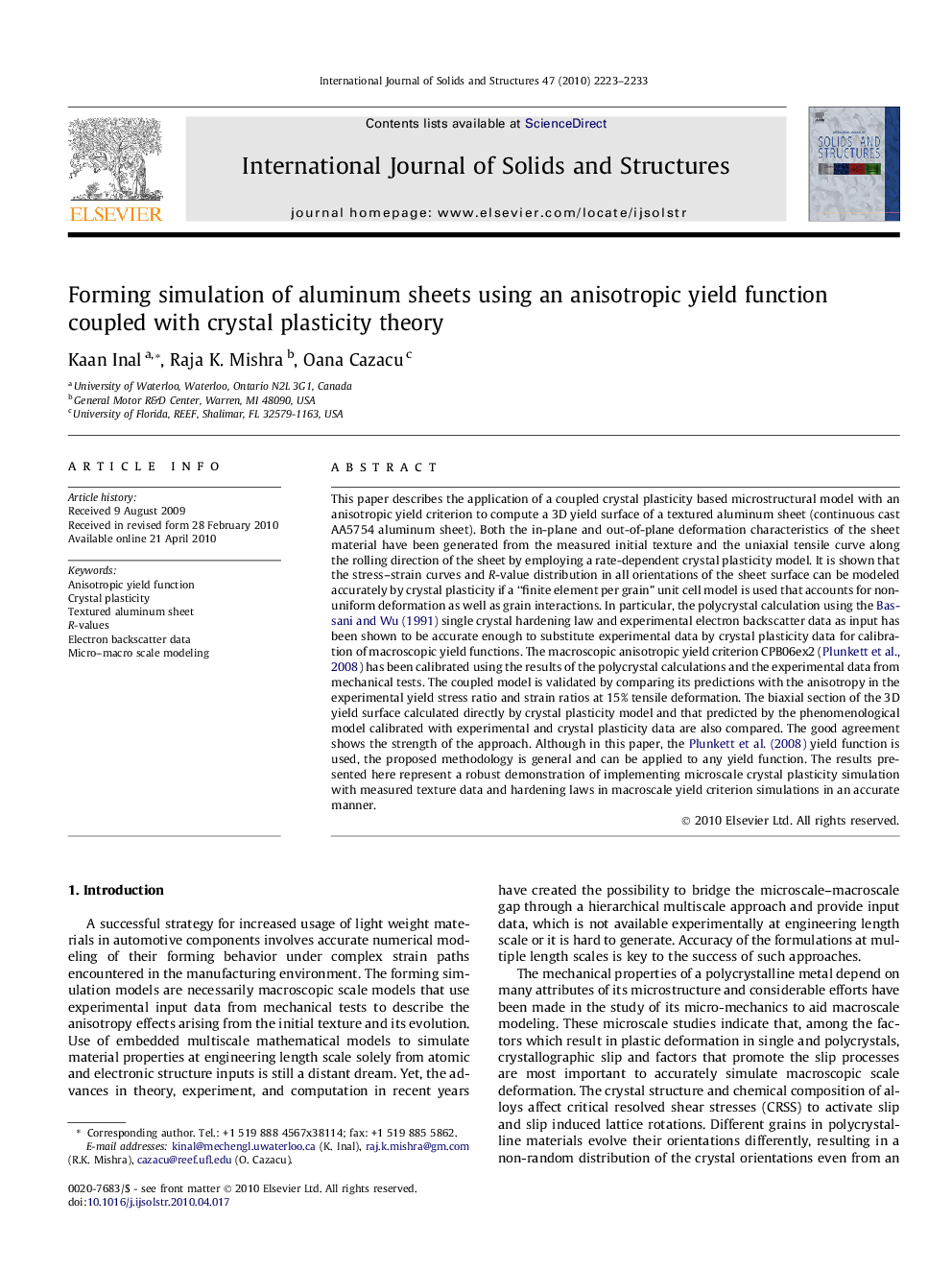| کد مقاله | کد نشریه | سال انتشار | مقاله انگلیسی | نسخه تمام متن |
|---|---|---|---|---|
| 279171 | 1430312 | 2010 | 11 صفحه PDF | دانلود رایگان |

This paper describes the application of a coupled crystal plasticity based microstructural model with an anisotropic yield criterion to compute a 3D yield surface of a textured aluminum sheet (continuous cast AA5754 aluminum sheet). Both the in-plane and out-of-plane deformation characteristics of the sheet material have been generated from the measured initial texture and the uniaxial tensile curve along the rolling direction of the sheet by employing a rate-dependent crystal plasticity model. It is shown that the stress–strain curves and R-value distribution in all orientations of the sheet surface can be modeled accurately by crystal plasticity if a “finite element per grain” unit cell model is used that accounts for non-uniform deformation as well as grain interactions. In particular, the polycrystal calculation using the Bassani and Wu (1991) single crystal hardening law and experimental electron backscatter data as input has been shown to be accurate enough to substitute experimental data by crystal plasticity data for calibration of macroscopic yield functions. The macroscopic anisotropic yield criterion CPB06ex2 (Plunkett et al., 2008) has been calibrated using the results of the polycrystal calculations and the experimental data from mechanical tests. The coupled model is validated by comparing its predictions with the anisotropy in the experimental yield stress ratio and strain ratios at 15% tensile deformation. The biaxial section of the 3D yield surface calculated directly by crystal plasticity model and that predicted by the phenomenological model calibrated with experimental and crystal plasticity data are also compared. The good agreement shows the strength of the approach. Although in this paper, the Plunkett et al. (2008) yield function is used, the proposed methodology is general and can be applied to any yield function. The results presented here represent a robust demonstration of implementing microscale crystal plasticity simulation with measured texture data and hardening laws in macroscale yield criterion simulations in an accurate manner.
Journal: International Journal of Solids and Structures - Volume 47, Issue 17, 15 August 2010, Pages 2223–2233